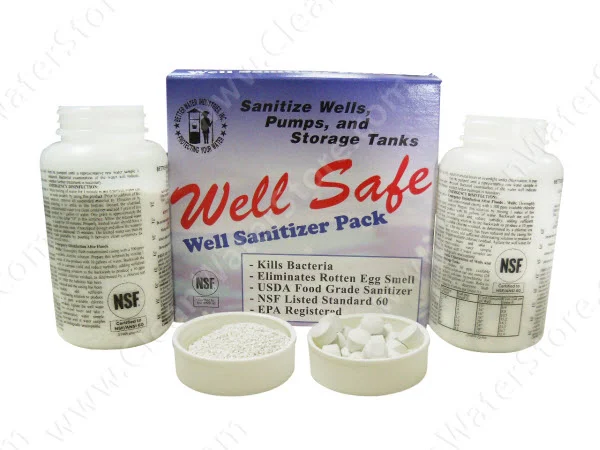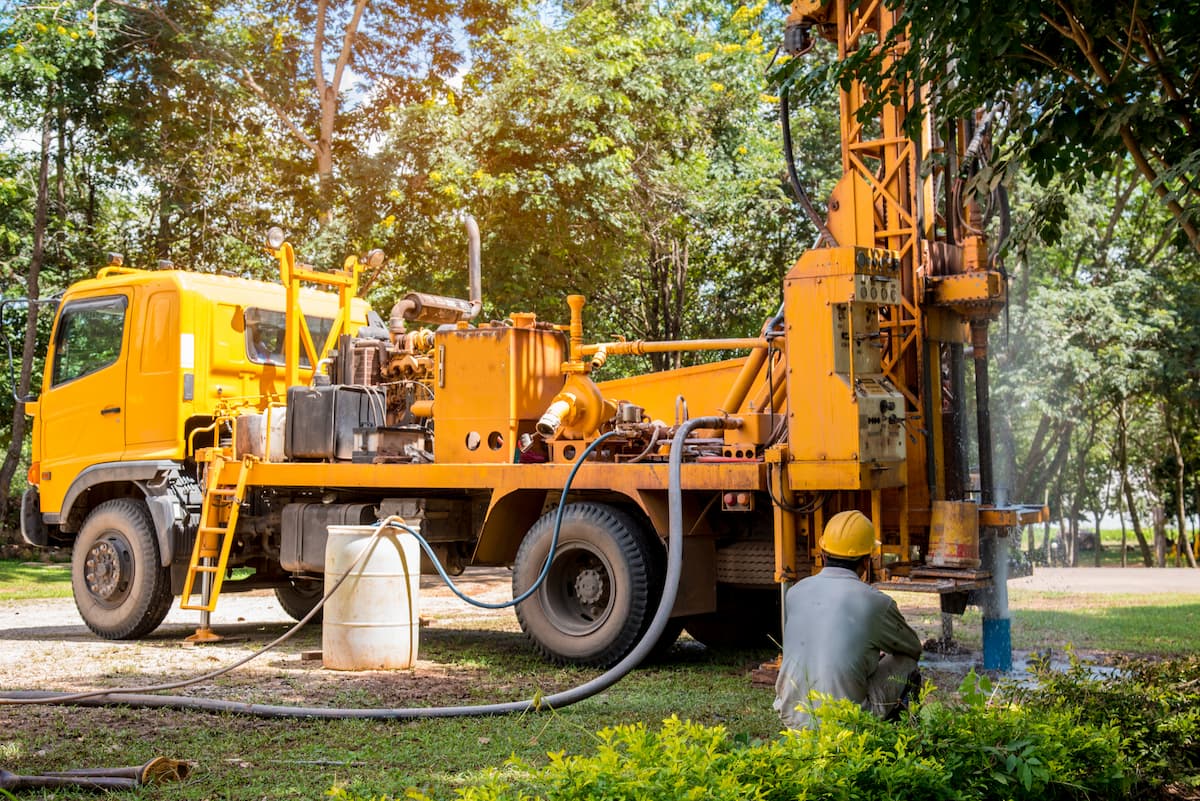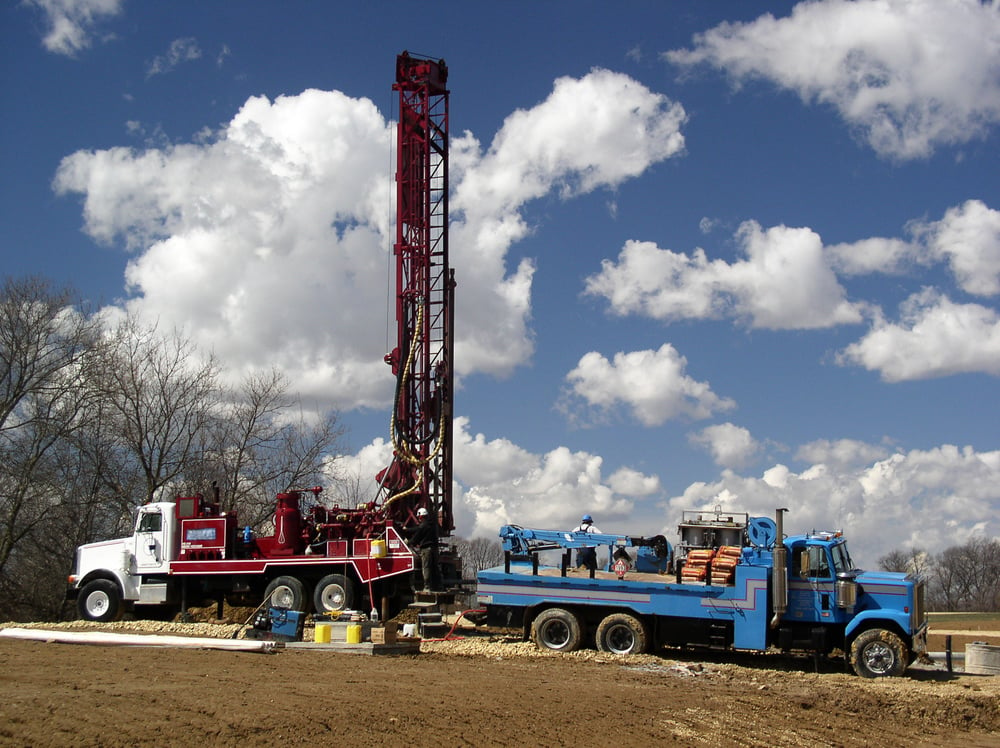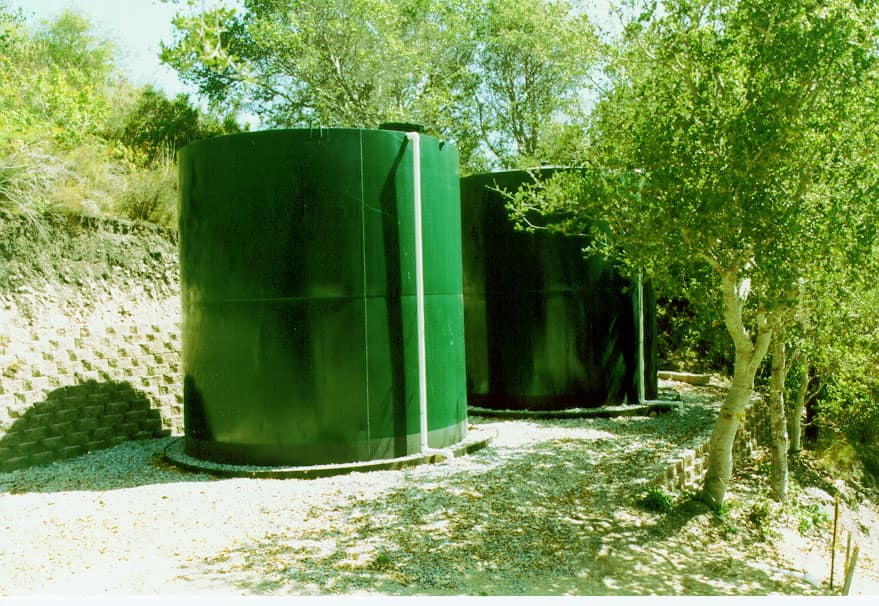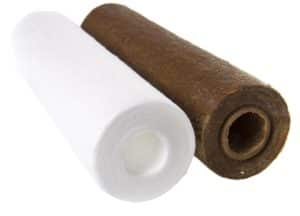Iron & Manganese Removal Using Manganese Dioxide Filter Media
Podcast: Play in new window | Download
Subscribe: RSS
Welcome to Episode 11 of Clean Water Made Easy Podcast.
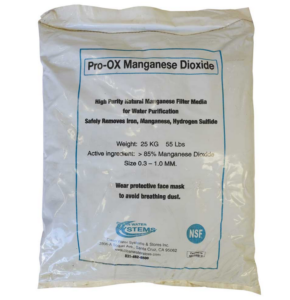
Manganese dioxide is a natural filter media that effectively removes iron, manganese and sulfur odor from well water. There are different types of manganese dioxide filter media and Gerry discusses the advantages of the various kinds as well as discusses what to look for when using this filter media.
Filter media is what is inside a filter tank and removes iron and manganese.
Manganese Dioxide Filter Media for Well Water
Items We Cover in this Episode:
- What is manganese dioxide filter media and how is it used?
- What are the benefits and advantages of using manganese dioxide for removing iron, manganese, and odors from well water?
- What is the difference between greensand, birm and other coated media and solid manganese dioxide media such as Pro-OX, Filox, Pyrolox, Birm etc.
- Under what conditions does manganese dioxide media work best?
- Importance of water chemistry, and flow rate, such as how many gallons or liters your pump puts out per minute
Transcript of Episode 11
Iron & Manganese Removal Using Manganese Dioxide Filter Media
You’re listening to the Clean Water Made Easy Podcast Episode 11
Hello, hey thanks so much for tuning in to the Clean Water Made Easy podcast. Gerry Bulfin here again. I’m a Water Treatment Contractor and WQA-Certified Master Water Specialist. I hope you’re having a fine day wherever you are listening.
In this series, I’ve been giving useful easy-to-follow tips and information all about well water, well water treatment systems, and how to improve the quality of your well water. I appreciate the emails and feedback I’ve been getting and if you’re using iTunes and you’d be so kind, it’d be great to if you went over to iTunes and rate it and maybe left a short review of the podcast. That helps the podcast a lot, I appreciate it.
In today’s episode, we’re going to talk all about iron and manganese media. Specifically, manganese dioxide filter media. Media is the word that we use, it looks like sand, it’s a granular type of filter media and it goes inside a filter tank. In this context what we are talking about are backwashing iron filters. So the water flows in down through the filter media, iron and manganese is removed and then after a while, they’re usually automatic, it turns on, backwashes and cleans this media.
So there’s many different kinds of filter media, and that’s what we are going to talk about. Specifically, manganese dioxide media which is the probably the most common type of filter media used for iron and manganese removal.
If you want to see pictures of what the media looks like and iron filter tanks, please go to our website, cleanwaterstore.com/blog/podcast and you can also email me directly at [email protected] and I spell my name with a G, G E R R Y and then B U L F I N.
Topics in this Episode
Anyway, today the items we’re going to cover are: what is manganese dioxide, how is it used, what are the benefits and the advantage of using manganese dioxide for removing iron, manganese, odors from well water, and what’s the difference between the coded type of media such as greensand or Birm where there’s a thin layer of manganese dioxide coating on a different type of mineral element underneath it. And the solid manganese dioxide media where it’s a solid granular like a solid chunk of the manganese dioxide. You see different brand names for that, such as Pro-OX, that’s one we sell, or Filox, Pyrolox, those are all brands of the manganese dioxide media.
We’re going to talk about under what conditions manganese media work the best and the importance of water chemistry and flowrate. I did talk about this before in episode 2, we talked about how to test your flowrate, and in episode 5 we covered basic iron treatment, but here I’m going to talk specifically more about manganese dioxide. I get a lot of questions about it so it should be interesting.
If you’re listening to this, you already know this but iron is a serious problem. Many folks all over the world have problems in their well. It’s now a problem in the US and Canada but we see a lot of iron and manganese problems in Mexico and South America. We’ve even seen some folks in Europe have this problem and know there are different parts of Europe that have a problem with it, and in Middle East, Asia of course.
So generally what you should be seeing with iron is .3 parts per million or less. And in manganese, .05 parts per million or less. If it’s a very little amount over that level, it causes stains, water can have a red, brown, or yellow color and can stain laundry fixtures.
Manganese and other metal that leaves stains, instead of rust stains like iron, leaves a brown stain. That again is the standard for that is anything over .05 ppm. So if you have an effective iron and manganese filter to reduce the level below 0.05 ppm, it’s not going to cause stains. Iron and manganese are not really health threats, but it tastes pretty terrible if it's high enough but some people are affected. Manganese can affect their stomach or some people have problems with too much iron in their diet so that’s another problem. But generally it’s more of an aesthetic issue.
So we use a few different methods to remove iron and manganese from well water. Generally, iron and manganese are usually found in groundwater dissolved. Now that is, the water looks clear but if you taste it, it tastes terrible, tastes like rust or has a bad taste from the manganese, but the water looks clear. But if your water has been exposed to lots of air or there’s dissolved oxygen present and/or sometimes iron bacteria, then you get rusty water coming right out of the ground. But usually it’s clear water.
So the reason I brought that up is because that’s how manganese dioxide works. What happens is, the water comes out of the ground clear, but when the iron and the manganese hit the manganese dioxide media, the iron and manganese oxidize. That is, they turn from a dissolved form to a solid form. In other words, they’re ferrous iron and they turn into ferric iron and that is trapped in the filter media. Then once or twice a week or more often, it turns on in the middle of the night, typically this is for homes, and backwashes all that rusty water out. It removes rust particles out and then the filter media is good to go for another run. This can last years, hopefully they do last many years.
So you’ve got this situation where you need to oxidize the iron and manganese. Traditionally, and is still used quite a bit, is that you can use just plain sand and anthracite. So for instance, it’s special type of filter sand but basically it’s just sand, and then the water is injected with chlorine, ozone or it’s aerated in a very strong way, but it’s typically chlorine. Then the water flows into these sand filters, and if all the iron is a hundred percent oxidized just right, then the sand filter will eventually start to remove the iron over time.
The reason that this was a hassle is that it required very careful operation. It didn’t always work well, you had to have an operator present, you’d had adjust the chlorine levels based on different water conditions. Sometimes you’d had used other chemicals to help with the process. So generally it’s not that effective. So for homes and small communities it’s not used that much, but it’s cheap. So that’s one reason it was used a lot. But you can’t just get a standalone sand filter just like you can’t use a standalone cartridge filter and expect it to remove all the iron and rust that’s in the well water. The iron is largely dissolved in the water so you need some way to oxidize it.
Types of Filter Media
So there are various types of filter media. The main types of manganese dioxide media that we’re going to talk about here are ones that are coated and ones that are a high purity, like a solid chunk of the manganese dioxide. So they both work well, but they have different advantage and disadvantages. I’m mainly going to talk about manganese dioxide, but the first we’ll talk a little bit about oxidation because it relates to the type of manganese dioxide you might use.
Mostly, a very common way for homes is to use either aeration or chlorination. So chlorine has advantage that it kills iron bacteria and it works really well with manganese dioxide. You can look at it this way, it primes the water or increases the oxidation capacity of the water. You don’t need to inject enough air, chlorine or ozone to get the iron to completely turn to rust.
The idea is that you just want to increase the potential of the water for oxidation so when it hits the manganese dioxide media, a catalytic reaction takes place right in the media and boom, you get all these great formation of iron floc happening right in the media. Usually if it’s a tank, say it’s a standard tank for a home, it might be 3 or 4 feet tall or maybe 5 feet tall, most of this oxidation process will take place right on the top layer of the media. But the idea is that, you’re using some kind of oxidizer ahead of the manganese dioxide. That’s the best way to go.
I’ll talk about it but there are some conditions where you don’t need any oxidation if your water chemistry is right. You can just use the manganese dioxide system by itself without any aeration. But generally that’s a rare case or that’s a smaller percentage of the cases that we at least see in North America. Perhaps if you get into the borehole wells in Africa or somewhere else where there’s shallow wells, and there’s a lot of oxidation going on anyway, then you just use a standalone filter system. But usually you’re combining the manganese dioxide with some kind of oxidation. So chlorine, air, or ozone works good, or hydrogen peroxide.
I’m going to talk about hydrogen peroxide in its own dedicated episode coming up. But while peroxide can be used as an oxidizer before the manganese dioxide filters, it’s not as effective as chlorine and especially if you have manganese. The peroxide is not that effective for manganese. It’s counter-intuitive because we have peroxide and sometimes you put it on your skin to clean a cut or whatever so you think , “Oh it’s going to kill bacteria”. But when we have it in the water, it’s considered a very weak biocides. So it’s not an effective disinfectant at the levels we’re using. It’s more of an oxidizer.
So anyway it works great if you have iron, if you’re looking for iron removal with a manganese dioxide filter. But if you have manganese in the water then you’re better off using chlorine or ozone.
Aeration can work too but you have to have the pH up higher, I’m going to talk about pH in a minute here too. But the pH is critical, the pH is needs to be closer to like between 7.5 to 8. If you’re using some type of very weak coated media, you have to get the pH over 8.2 for manganese to work, and those media such as Birm are not as effective for manganese removal in our experience.
Okay so we talked about oxidation but now, what type of filter media to use. We talked about the sand and anthracite media, it is not the best option generally for iron treatment especially for homes on standard wells. It is better to use manganese dioxide because the manganese dioxide is a catalyst. So when there is a tiny bit of dissolved oxygen in the water, and the iron and manganese in the water come in contact with the manganese dioxide, you get that catalytic reaction and the iron and manganese is filtered out of the water. Same with hydrogen sulfide. If there’s enough oxidation in the water, then when the hydrogen sulfide and water flow through the manganese dioxide media, it basically converts the hydrogen sulfide into an insoluble particle that then gets trapped in the media and the odor is gone.
Several different types of manganese dioxide coated filter media are used. Birm is very popular one, it’s a Clack Corporation trademark. It’s been used for many years. It’s cheaper, it’s light, but has a very, very thin coating of this manganese dioxide on it and it’s a bit unstable, you can’t use chlorine with it. It strips the coating. If there’s hydrogen sulfide in the water, the rotten egg odor, it doesn’t work well for that.
We’re in California, for some reason we can’t sell it here because of the proposition where there’s a warning against. The backwash has a little bit of chromium in it from what we heard so it’s banned basically. But anyway, a lot of people have used it for many years actually and it works good if you have just a small amount of iron and you have the right conditions for it. The Clack will tell you the operation conditions.
But it has a very thing coating, probably 1% You can talk about coatings in terms of what the percentage of it is manganese dioxide. So Birm and maybe a couple of others, they’re very low, like 1%. Greensand and some of the different Greensand type coated media are a little bit higher, somewhere like 5%. Some are as high as 10% There’s one that can even go up to 18% which is very high for the coated media.
So that just means that they’ve been able to put a coating of this manganese dioxide material over some other kind of cheaper and lighter substrate. Usually silica, one company uses dolomite which also helps raise the pH but it’s sacrificial so it doesn’t last as long.
And then there’s a couple different types of substrate or inner core that they coat with manganese dioxide. So, historically, greensand filters were cleaned and regenerated with potassium permanganate, this purple chemical. You can also inject potassium permanganate into the pipe before the greensand filter and you can do it this as well with the manganese dioxide filters. But this intermittent regeneration so-called, regenerates the media intermittently, is perhaps less effective than continuous regeneration where you’re injecting chlorine or ozone into the water ahead of the greensand filter. And now what you get is the media doesn’t ever get exhausted. This media can only run so long before it needs to be regenerated, usually with potassium permanganate or chorine. You can also inject that into the water ahead of it. But it needs something, these type of coated systems really don't work well on their own without any type of oxidation. They usually needs some kind of oxidation or they need water that already has a lot of dissolved oxygen.
So the other type of media that we already talked about is the solid manganese dioxide. The solid type just means is that it is an ore that they have mined, so it’s a natural material, and they’ve carefully grated it into a fine particle. It’s not coated and it’s not treated really at all. All it is, is just they mine this pure manganese dioxide ore and then they grind it and grate it and wash it so you get a very high quality filter media. So theadvantage is it’s natural, and. there’s no chemicals in it.
We buy ours from Pro-Ox. They’re one of the largest manganese producers in the world and the vast majority ofthe manganese they find is not suitable for water treatment and that’s true with other mines as well. So what happens is that most of the manganese is used for various industrial processes, like steel and batteries. So the vast majority, I don’t know what the percentage is, but I’ve heard it’s like 97 to 98% of all the manganese is not used in water treatment. But, what happens is that when they’re working in the mines and they find a relatively high grade, in cases that we use it it has to be greater than 80% and the average is like 85% pure manganese dioxide, then they set that aside.
That’s what they use for water treatment and it’s low in other contaminants and ours is NSF certified. I’m pretty sure all the filter media that’s sold, unless its imported or off brand or something, is all NSF- certified. NSF is an independent organization and they test it to make sure that there’s nothing contaminating the water. Its not adding lead or arsenic into the water, or some other weird stuff. It’s in a good form that doesn’t add anything into the water.
So this solid manganese dioxide media is interesting. There are different strengths and there’s different qualities. I know like for instance in some countries, you find it in like India and in China, the solid manganese dioxide has very low purity. It’s maybe 20%, 25% it doesn’t work that well.
And so this stuff works really well and like I said that there’s different brands you can look for. Pro-OX, what we have but there’s Filox, there’s Pyrolox, there’s different ones. And what it is, is that the media is porous. So the higher the porosity of the solid manganese dioxide media, the better it is. And then also, there’s other structures that are inside it like a pyrolusite and nsutite structures that create this highly oxidative environment so that it basically works better. For what we’ve been able to gather over dealing with thousands of these systems over the years is that you can get higher flow through it with a smaller filter.
The disadvantage is it’s heavier than that coated type. So a lot of people are turning against it because it requires a little bit higher backwash rate. It needs a higher flowrate but it’s not huge,like 2 or 3 time,s but it’s somewhere like 30% higher flowrate than say a greensand or other type of coated media.
But the advantage is that we feel is that, and it’s not to be a sales thing for our media, I’m trying to give you all the different advantage and disadvantages, but the advantage is that it lasts longer and generally it just seems to work better. It doesn’t fail quick. Some of the coated media can fail within a few years. You get the media and the coating gets worn off. It’s a fact that if there’s a low pH for a certain time it ruins the media.
But the Pro-OX, it just doesn’t get ruined. It can, if it’s not backwashed properly or set up properly, it can start to clump together but you can take it out of the tank or cut the tank in two and smash it up yourself and reuse it. I mean, we don’t say it’s a permanent media because some people do replace it after say 10 years or so. But generally it’s pretty permanent, I mean it does last a long time because it’s a very light sacrificial media. In other words, there’s a very small attrition. It can backwash many, many more times than the standard coated media which is a manufactured media.
So that’s the big difference in it. However, if you don’t have the flowrate in order to backwash it, then you have to go to a different, lighter media or you have to put in a holding tank or figure out some other way to increase your flowrate.
So as I was talking about how the performance of the media is directly related to the purity of the manganese dioxide and the porosity of the granules and the level of highly active sites on the structure. So you want to have one that’s higher purity, more porous and strict particle sizing is important.
All the media now have a good, high uniform coefficient, which means that all the particles are the same size. That’s what you want to look at, you want to make sure the media in the filter tank is very uniform. And so that’s a sign of a high quality media, it’s all very uniform in size. And the solid manganese dioxide filters they can use intermittent or continuous regeneration as well, generally continuous regeneration works best where you're injecting chlorine ahead of it.
Now there are situations where you can use the manganese dioxide media without any prior aeration. And one way to figure that out is if you can measure the ORP. You can get a little ORP meter, sometimes you can go to a pool place and have them measure the ORP. But basically it measures millivolts and there’s different kinds of laboratory types and other ones. But essentially if you can raise the ORP over 200 millivolts, then the water has enough oxidizing capability on its own and it doesn’t necessarily need a chemical regenerate or aeration ahead of it.
Generally for homes we do recommend aeration because over time your water might change. You may know what you’re dealing with at this point, but maybe over time the iron can get worse, the pH could change, so it’s important that aeration helps with the iron filter media work because it adds in dissolved oxygen in the water. And/or you can use chlorine injection.
You can have a situation where you had a hundred percent of the iron with pure rust. In other words, a hundred percent oxidized iron, theoretically, you could use a cartridge filter or as I talked about it before, a sand and anthracite. But generally, the Pro-OX, the manganese dioxide media, this type of media will work better than just the cartridge because the iron will pass right through it.
Okay so what are some things to look for, well, one thing you want to look for is, make sure you check the pH of the water. You know, 7 is neutral. pH has a scale of 1 to 14 so 7 is neutral. Below 7 is considered acidic. Above 7, alkaline. It depends on whether there’s manganese in the water but generally you want to see a pH for iron removal between 7 and 8. You can have a lower pH, it won’t hurt the media. But it depends on how much iron is in the water, and it won’t work as well if the pH is much less than 7.
So there’s ways you can deal with that of course. If you have acidic water, you want to correct the acidic water anyway because you don’t want acidic water running into the home where it can corrode fixtures and fittings even if you have PEX pipe, you can still get corrosion problems on your water heater, etc. You can use another tank of crushed marble or other types of pH-raising filter media in a tank before the iron filter to raise the pH and neutralize the pH. If you have a very low pH, say 5, in that range then you might be better off injecting soda ash into the water which comes in food grade or potable water grade. You can also use sodium carbonate. And that all keep maintains a neutral pH and then the manganese dioxide will work great. Most people don’t have acidic water but we have quite a few people with acidic water. They usually either use a tank before it or they get a blend where you have 2/3 of the filter tank is manganese dioxide and then 1/3 of it is calcite or crushed marble or the less commonly used dolomite. But basically you’ve got a mineral that will add a tiny bit of calcium into the water and alkalinity and then neutralize the pH so your iron media will work.
Fortunately, the blends work good because the manganese dioxide media is much heavier so it sits on the bottom and then your calcite is on top. Then if you have a one tank system then you’ve got to add more calcite to it pretty regularly. So you might have to add it a couple times a year depending on how much water you’re using and what the pH is.
Okay after pH, the next thing you want to check is manganese. A lot of folks think “oh I’ve got rust stains”, “I got iron”. They don’t realize they also have manganese too. So if you get a system and you set it up where it only takes out the iron, then you’ll quickly realize that all the rust is gone but now you’ve got black or tea-colored stains in the dishwasher or on sinks or fixtures or in laundry.
So for manganese anything above 0.05 milligrams per liter causes stains. It’s a pretty low level and manganese requires more oxidizing power. It has a little slower reaction time than iron and a higher pH is required. So in our experience, if you have manganese, it’s better if you chlorinate it first or ozonate it. Aeration will work too as long as the pH is higher, like 8 is good, 7.5 to 8 is good. And by chlorination or aeration or ozonation, I mean an automatic or continuous system that injects a tiny bit of chlorine before the filter system.
The next thing you want to check to see is if you have iron and sulfur related bacteria. There are various types of bacteria that live in water and that are very common in the environment. They metabolize the iron and manganese for their cell walls and in the end you end up with a stringy mass. You can usually see it in the flush tank of your toilet where you’ll see it growing out from the sides or maybe the water will be bubbly with clumps of slimy gelatinous material floating in your flush tank. That’s a really good way to check because most people never clean their flush tank and the iron bacteria living in there just go to town and create this slime. And so, if you have that, then the manganese dioxide works great, it’ll take out the iron but it’s not going to take out iron bacteria or disinfect the water. So disinfection is a good idea if you can do it.
So it’s better to have a chlorinator, it’s the cheapest way, or an ozone system ahead of the iron filter. And then you’ve got disinfected water and the iron bacteria is removed along with the iron. However, there’s another way to do it and that’s sort of a semi manual way. Say you’re using an air injection iron filter, you’ve got your manganese dioxide filter, it’s working great, it’s taking out all the iron, Then once or twice a year or maybe more if you have a really bad problem, you sanitize the pipes and the well if you can with chlorine bleach. And so that kills the slime that’s growing in the pipes. In instance, there’s no more iron in the water, that works pretty good. Because the thing is, that iron bacteria are not only a nuisance, but they can create odor. This can happen especially in pipes that aren’t used much.
So we hear a lot of folks saying “yeah I don’t know what the story is like, I don't have a odor problem in the house except for the upstairs bedroom that doesn’t get used”, or “I have one part of the house that doesn’t get used but the odor is terrible in that water, what’s the story?” Well it’s because you have iron bacteria living in that pipe happily undisturbed and so by running chlorinated water through the pipes, it can kill that.
And I know I’ve referred to chlorine much of times and this is covered in the other podcast episode on chlorination. But even though we’re chlorinating, most of our customers do not have a chlorine residual in their water in the house. So there’s either usually carbon filter that removes it or they’re using a contact tank which gives time for the chlorine to degrade. After it goes through the manganese dioxide, it’s either gone or it’s really low where you can’t smell or taste it. Because you don’t want a high chlorine residual, you don't want a shower with high chlorine residual if you can avoid it. I mean, a lot of us grew up in city water where it has chlorine residual. But you know, the idea is that, if you have a septic tank, you don’t want to run a bunch of chlorinated water down the septic tank. So better to remove it and fortunately it’s cheap and easy to do, so most folks do that. They chlorinate the water, run it through the contact tank, then the iron filter and then the chlorine is removed when it goes in the house.
Okay the next one after iron bacteria is the rotten egg odor. The terrible sulfur smell that’s so common. A lot of times you’ll see specs that says it removes hydrogen sulfide. The thing is it doesn’t really remove hydrogen sulfide on its own for very long, unless you use an oxidizer. You almost have to use an oxidizer if you’re using any kind of manganese dioxide media, so chlorination is good. A combination of chlorination and aeration is good, but sometimes plain aeration is good as well. Ozone is really good except for the price. But the chlorination and aeration are relatively low cost ways to go.
I wanted to mention tannins too. Water that contains high levels of tannin has a tea-colored look to it. If you’re drinking tea, you’re looking at the tannin color of the tea. It’s not extremely common but it’s common in some areas of the country, and if you did use a strong oxidizer such as chlorine in a contact tank and then you have another filter tank with activated carbon, then low levels of tannin are not a problem.
It isn’t a problem for the manganese dioxide media but if you have enough tannin in the water, even after you removed the iron and manganese, you could still have a weird colored water. Like if you filled the bathtub and it has a slight tea-colored look to it. So there’s different kinds of tannin filter systems out there as well but that’s one thing you want to test if you suspect it, you know want to know how much tannins are in the water.
And last but not least is the flowrate. I talked about that a bit but the flowrate is just how many gallons in one minute your well pump can pump. So most homes in the US that are getting their water pressure off their submersible well pump, you’re looking in somewhere between 5 and 20 gallons a minute. 8, 10, 12 gallons a minute is pretty common. And then some folks with bigger homes or they have some agriculture used, they have higher flowrates. But you need to know the flowrate because the manganese dioxide or even the coated type, need a certain minimal flowrate to clean that media out. So that’s a critical thing. If you don’t know the flowrate, then you might make the mistake of buying two big iron filter and then you’re in trouble. It might work for a few months and then it quits. So you want to make sure you have something that will work and actually take out the rust that’s accumulated in the filter bed.
Okay well, I’m going to wrap it up. This kind of went out a little longer but it’s a little more complicated subject but like I’ve said if you have any questions you can email me personally at [email protected] or go on to our website, cleanwaterstore.com and get more information there.
To summarize, I talked about the best way to remove iron is by using oxidation and filtration and I talked about how the coated media worked fine but is a thin layer that can generally wear off or wore out quicker. The solid manganese dioxide media are heavier but they often have a higher throughput flowrate, that is they work faster and requires a smaller filter to do the same job as a coated type. And I went over to make sure to check for pH, and you have to know your well pump flow rate and be on the lookout for iron bacteria and tannins in the well water.
Okay well hey thanks again for listening and I hope you have a great day.



